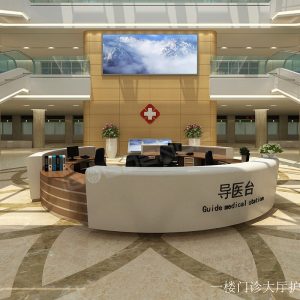Adaptability principle
Adaptability refers to the design of hospital furniture from the perspective of meeting the needs of the whole life cycle of medical facilities, so as to meet the needs of future hospital development. Therefore, medical furniture adopts modular and standardized design to improve the expansibility of its products, flexibly realize the splicing of different shapes, improve the production efficiency and quality of products, and save costs.

The principle of spatial matching
Medical space is a kind of medical space composed of architectural space, medical furniture and medical facilities. The size, lighting, temperature, ventilation, sound, type and location of medical furniture, color and material of each space should be reasonably arranged. Hospital furniture is humanized concept design in accordance with the overall hospital space environment, has reached the integration of hospital building space as a whole, showing the characteristics of each hospital, comfort, relieve the tension of patients seeking medical treatment, reduce the work pressure of medical staff. Avoid the hospital indoor environment cramped and urgent, monotonous, unpleasant odor further expand the burden of aggravating the patient’s heart. Here, attention should be paid to the design of hospital furniture, which should be integrated with the two aspects of hospital building environment space and hospital medical concept, so as to achieve a comfortable and personalized effect.
Humanization principle
The design concept of “people-oriented” has become a design trend. As the equipment in close contact with patients in the diagnosis and treatment environment, the humanized design of medical furniture is particularly important. The humanized design of medical furniture is not only convenient for the use of doctors and patients, but also will better improve the hospital’s healing environment and diagnosis and treatment services.
Medical furniture should meet the requirements of humanization, the first step is to carry out ergonomic design, which must meet the requirements of doctors and patients. For example, edges and corners should be changed to rounded corners, handrails should be designed to facilitate patients to stand up, etc. At the same time, the tone should be more harmonious and safe.
